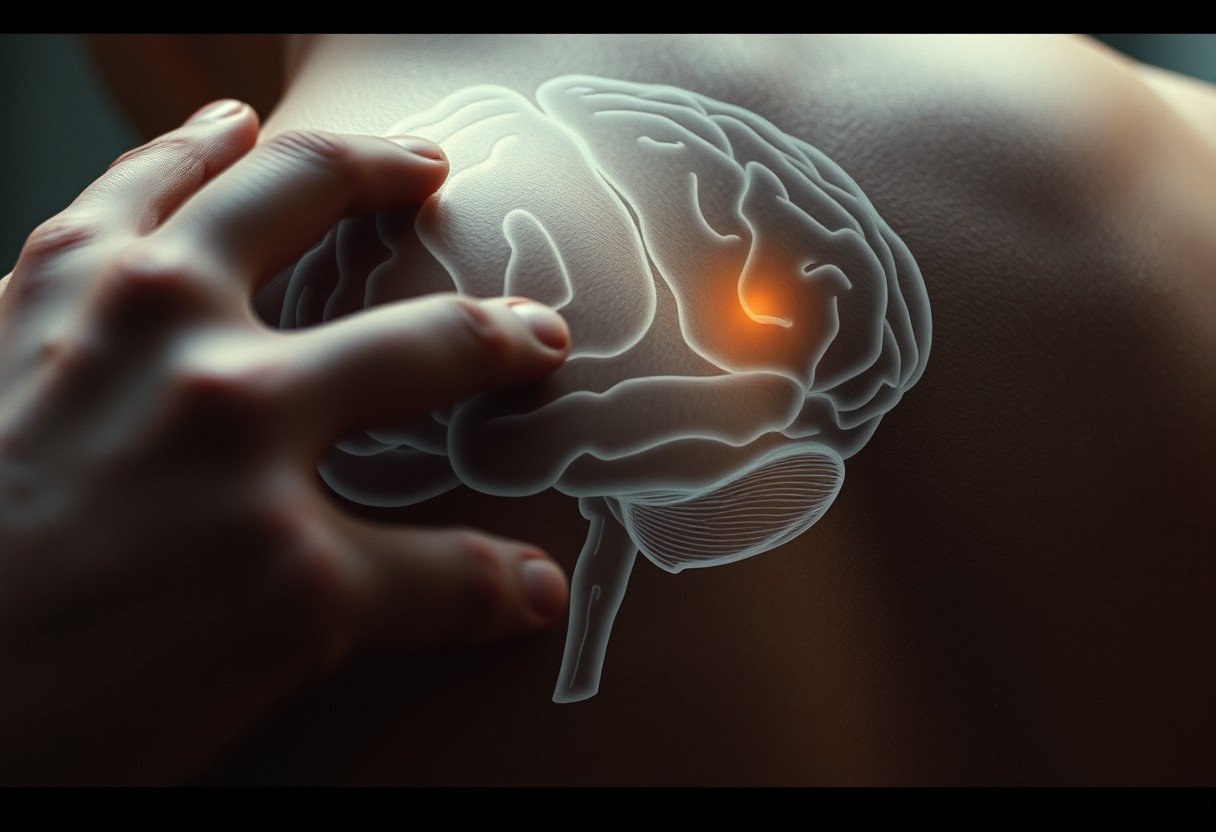When someone gives you a pleasant back scratch, a specific region of your brain gets to work. The sensation travels from your skin, up your spinal cord, and is primarily processed in the parietal lobe. This part of your brain contains the somatosensory cortex, which acts as the main center for interpreting tactile information like pressure, texture, and location, allowing you to fully experience and enjoy that simple touch.
The Brain’s Main Hub for Touch: The Parietal Lobe
Your brain is divided into four main lobes, and when it comes to feeling a scratch, the parietal lobe is the star of the show. Located near the top and back of your head, this lobe is responsible for integrating sensory information from various parts of the body.
Within the parietal lobe is a critical area called the primary somatosensory cortex. Think of this as a map of your entire body laid out across your brain tissue. When your back is scratched, the specific area on this map corresponding to your back becomes active.
This is how your brain knows exactly where the sensation is coming from, whether it’s your upper left shoulder or lower right back. The parietal lobe doesn’t just feel the touch; it gives it a location, helping you create a complete picture of the physical experience.
How a Touch Signal Reaches Your Brain
The journey of a sensation like a back scratch is incredibly fast, moving from your skin to your brain in a fraction of a second. It all starts with specialized nerve endings in your skin that detect the pressure and movement.
These nerves send an electrical signal through your peripheral nervous system to your spinal cord. The spinal cord acts as a major highway, relaying this information upward. Before reaching its final destination, the signal makes a quick stop at the thalamus, which is like the brain’s central sorting office. The thalamus directs the touch information to the correct spot in the somatosensory cortex for processing.
Specialized Receptors: The Skin’s First Responders
Your skin is not just a protective barrier; it’s a complex sensory organ filled with millions of receptors. For touch, the most important ones are called mechanoreceptors, which respond to mechanical pressure or distortion.
There isn’t just one type of mechanoreceptor. Different kinds are specialized for detecting various types of touch, allowing your brain to understand the difference between a light brush, a firm scratch, or a deep pressure massage. This diversity is key to our rich tactile world.
- Merkel Cells: These are responsible for sensing light touch and textures, helping you feel the fine details of the scratch.
- Meissner’s Corpuscles: They are sensitive to light touch and vibrations, detecting the initial contact and movement of the scratch.
- Pacinian Corpuscles: These receptors respond to deep pressure and high-frequency vibrations.
- Ruffini Endings: They detect skin stretch and sustained pressure, letting you know how long the scratch is being held.
Together, these receptors provide a constant stream of information to your brain, painting a detailed picture of every touch you experience.
Decoding the Message with Different Nerve Fibers
Once a receptor is activated, the message travels along sensory nerve fibers. Not all fibers are the same; they vary in size and speed, which affects how quickly and what type of information reaches your brain. This system is crucial for your body to react appropriately to different stimuli.
The type of nerve fiber used determines whether you feel a gentle touch almost instantly or a dull ache more slowly.
| Nerve Fiber Type | Description |
|---|---|
| A-beta fibers | These are fast, myelinated fibers that transmit most touch sensations. |
| A-delta fibers | Myelinated fibers that quickly send signals for sharp pain and temperature. |
| C fibers | Slow, unmyelinated fibers that transmit dull, aching pain. |
For a pleasant back scratch, the A-beta fibers are doing most of the work, quickly sending signals of light touch and pressure to your brain for interpretation.
Putting It All Together: How Your Brain Interprets the Scratch
Feeling the scratch is one thing, but interpreting it as pleasurable is another. This is where higher-level brain functions come into play. After the somatosensory cortex processes the basic tactile information (where, how hard, how fast), other regions known as association areas get involved.
These areas integrate the sensory input with your memories, emotions, and current context. The limbic system, your brain’s emotional center, can be activated, connecting the physical sensation to feelings of comfort, safety, and pleasure. This is why a scratch from a loved one might feel better than a random touch.
This integration is a form of multisensory processing, where your brain combines information from touch with other senses and emotional context to create a complete, meaningful experience.
Why Sensation Is a Personal Experience
Have you ever noticed that one person loves a deep, hard back scratch while another prefers a very light touch? This highlights that our perception of touch is highly individual. Several factors can influence how you experience and interpret sensations.
Your unique sensory experience is shaped by a combination of biological and environmental influences. Understanding this can help explain why people have different comfort levels with physical contact.
- Genetics: Your DNA can play a role in the density and sensitivity of nerve endings in your skin.
- Past Experiences: Previous positive or negative experiences with touch can shape your emotional response to future sensations.
- Psychological State: Your mood can affect how you perceive touch. When you are relaxed, a scratch is more likely to feel good than when you are stressed or anxious.
- Age: Sensory perception can change over a lifetime, with sensitivity sometimes decreasing with age.
Frequently Asked Questions
Which lobe of the brain is responsible for feeling touch?
The parietal lobe is primarily responsible for processing tactile sensations. It contains the primary somatosensory cortex, which interprets signals related to touch, pressure, temperature, and pain from all over your body.
What does the somatosensory cortex do?
The somatosensory cortex is a specific area in the parietal lobe that acts like a map of your body. Its main job is to receive and process sensory inputs, allowing you to identify the location, intensity, and type of touch you are feeling.
How does my brain know exactly where a scratch is?
Your brain knows the precise location of a scratch because different parts of the somatosensory cortex are dedicated to specific body parts. When receptors in your back are stimulated, they send a signal to the exact “back” region on this brain map.
What is the difference between mechanoreceptors and nociceptors?
Mechanoreceptors are sensory receptors that respond to mechanical pressure or touch, like a gentle scratch. Nociceptors, on the other hand, are pain receptors that are activated by stimuli that could potentially cause harm, such as a very hard or sharp scratch.
Can my emotions change how a touch feels?
Yes, absolutely. Your brain’s association areas and limbic system integrate sensory information with your emotional state. This is why a touch from someone you trust can feel comforting, while the same touch from a stranger might feel unpleasant or threatening.








Leave a Comment